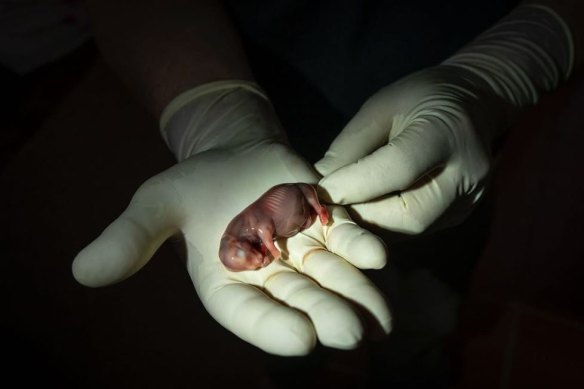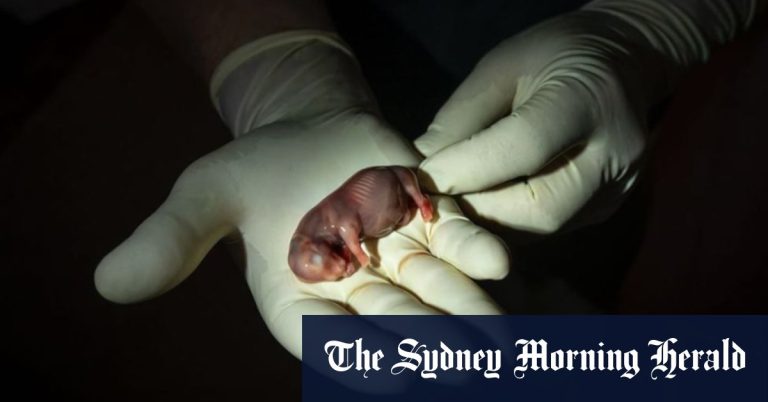The northern white rhino is one of the most endangered mammals on Earth, and all conservation efforts to save it have been thwarted by poaching, civil war, and habitat loss.
Since the 1960s, its population has declined from 2,000 individuals to only two females remaining today, mother and daughter Nagin and Fatu, currently protected in the Ol Pejeta reserve near Mount Kenya.
“Our current success also demonstrates the great potential that zoos have in saving endangered species.”
Jan Stejskal, BioRescue project coordinator at Safari Park Dvur Kralove
In the new project, scientists and veterinarians transferred two southern white rhino embryos to Cora, a southern white rhino, who was chosen as the surrogate mother.
The eggs were recovered from Elinor, a southern white rhinoceros living at the Baeri Daiza Zoo in Belgium, while the sperm came from a male named Athos from the Salzburg Zoo in Heilbronn, Austria.
The eggs were fertilized in the laboratory before being transferred to Cora after they developed into blastocysts.
However, Cora died after only 70 days of pregnancy after contracting Clostridium spores, following unusually heavy rain. An autopsy showed that the pregnancy lasted 70 days and produced a well-developed male fetus measuring 6.4 cm long.

A 70-day-old rhinoceros embryo.credit: John Juarez
Experts are now implementing vaccination programs and quarantine measures to protect rhinos from bacteria.
The team expects to transfer a northern white rhino embryo soon, and they hope to have calves within the next two or three years.
“With this successful embryo transfer, the BioRescue team has completely opened the way for the first northern white rhino calf born through artificial reproduction,” said Jan Stejskal, BioRescue project coordinator at Safari Park Dvur Kralove.
download
“As always, we first wanted to demonstrate that our approach works with southern white rhino genetic material, because it is more available. By perfecting this step, we can now use northern white rhino embryo for the first time in embryo transfer.
“Our current success also demonstrates the great potential that zoos have in saving endangered species.”
The project to revive the northern white population has been ongoing for several years, but it was not until 2018 that scientists succeeded in achieving the first rhinoceros embryo in a test tube from frozen sperm from a northern white male and an egg from a southern white female.
Since there are only two females left and all the available semen comes from only four males, artificial insemination alone will not be able to create a self-sustaining population of northern white rhinos with the necessary genetic diversity.
The team also has skin samples from ear slits taken from 12 rhinos before they died, from which they hope to create eggs and sperm.
The Telegraph, London
Get a direct note from our foreign correspondents on what's making headlines around the world. Subscribe to the weekly What in the World newsletter here.

